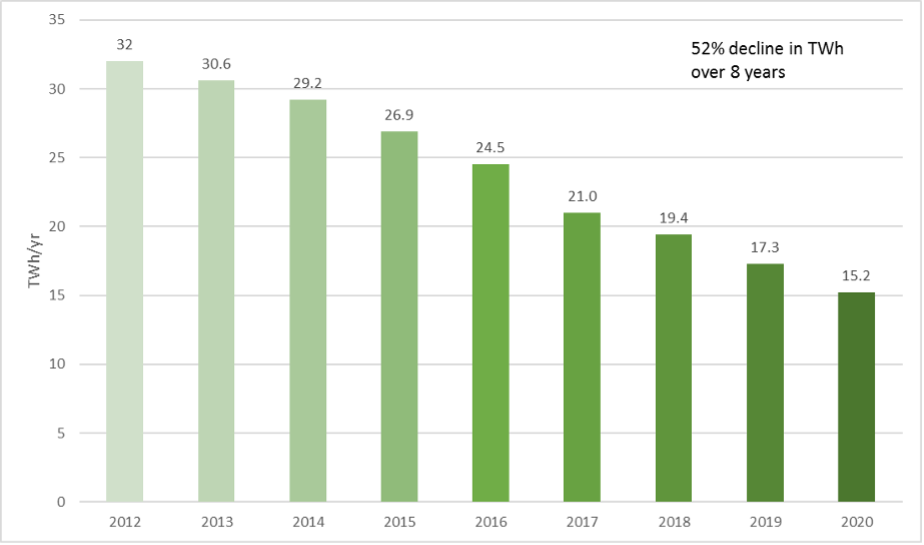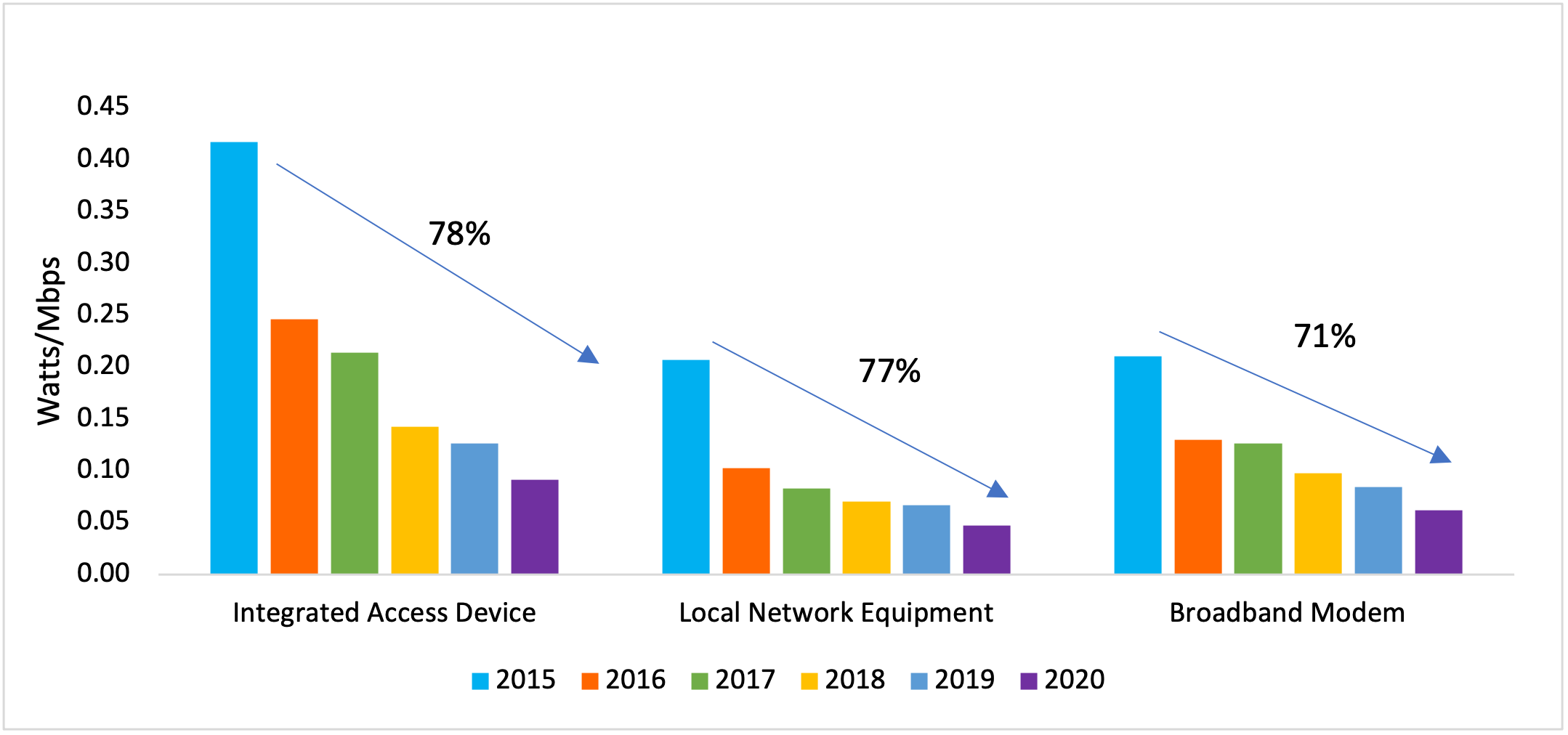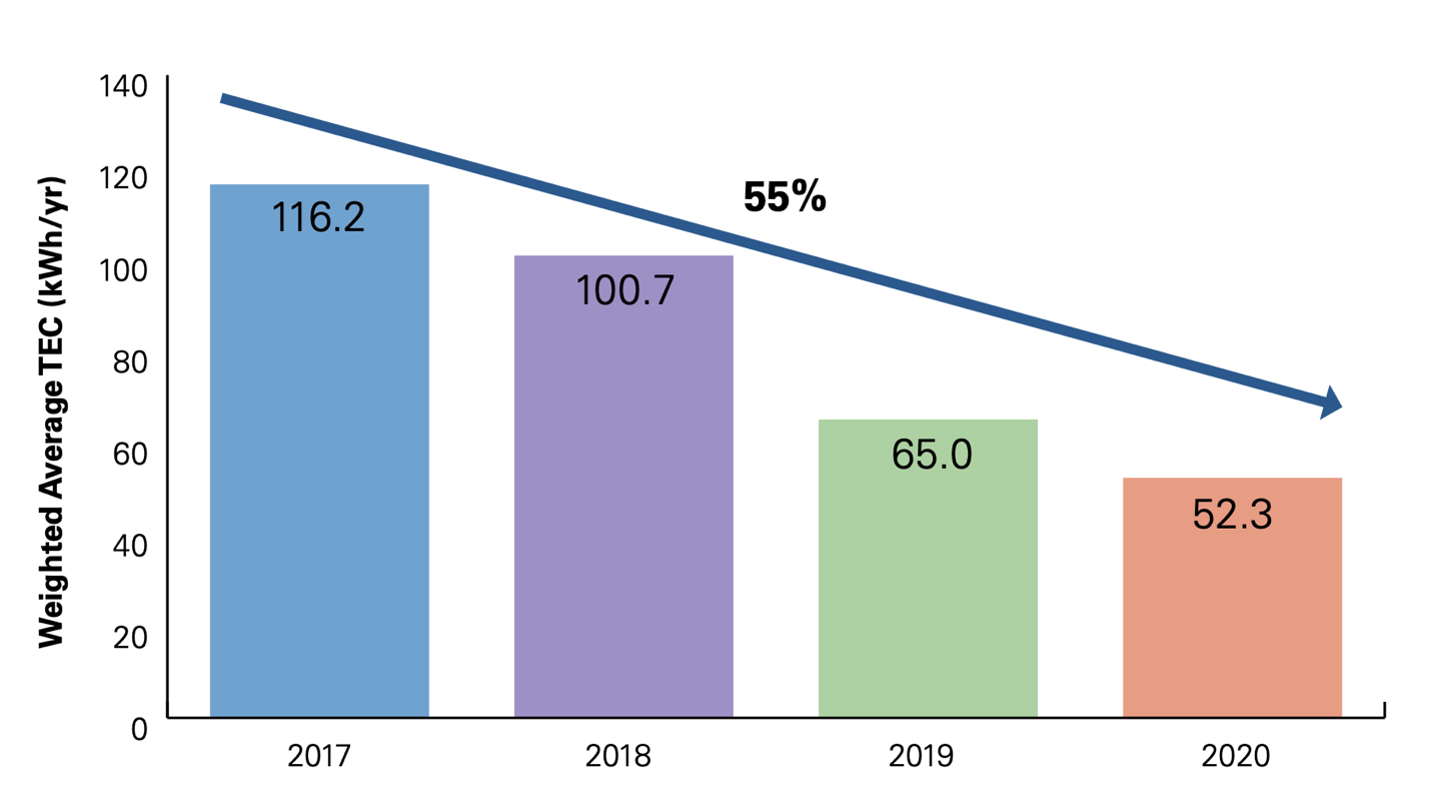Energy
U.S. Set-Top Box Voluntary Agreement Cuts Energy Use by 50 Percent

It’s that time of year again! The annual reports for the energy efficiency voluntary agreements (VAs) have been published. Every year, I think energy savings will plateau because it obviously takes some energy to power our set-top boxes and cable modems. Yet, once again, the annual reports have revealed another set of amazing accomplishments!
U.S. Set-Top Box Voluntary Agreement
The U.S. Set-Top Box Voluntary Agreement (STB VA) was established in 2012 with the goal of reducing the energy consumed by set-top boxes used for residential pay-TV service. At that time, energy efficiency advocates Natural Resources Defense Council (NRDC) and American Council for an Energy-Efficient Economy (ACEEE), along with pay-TV service providers from cable, satellite, and telco industries determined a baseline estimate of the annual energy consumed by all pay-TV set-top boxes in the United States. According to the report just published by D+R International, the independent administrator for the STB VA, the energy used by STBs in the United States has declined by over half from that baseline estimate!

Estimated Annual Energy Used by Set-Top Boxes in the United States
This 16.8 TWh of savings in 2020 alone equates to over $2.2B in consumer savings and avoiding over 11.9 million Metric Tons (MMT) CO2. To put this into context, this savings in just 2020 is equivalent to the greenhouse gas emissions from nearly 2.6 million passenger vehicles driven for one year.

Add this up over the eight years of the VA, and consumers have saved nearly $9.3B and avoided 50.9 MMT CO2! That’s the equivalent of carbon sequestered by 842,539,644 trees!

Several factors have contributed to this substantial decline in STB energy use, including the deployment of whole-home digital video recorders (DVRs), migration of DVRs to the cloud and migration to Internet Protocol (IP) video with much-lower-power IP boxes, or no extra STBs at all. The STB VA Annual Report also found that more than 56 million unique customer-owned and -managed devices (including smart TVs, mobile phones, laptops and tablets) accessed video services during 2020.
This VA isn’t done yet! Earlier this year, the signatories, including NRDC and ACEEE, committed to renewing and extending the U.S. STB VA through 2025.
U.S. Small Network Equipment Voluntary Agreement
The U.S. Small Network Equipment VA (U.S. SNE VA) also continued to make strides during 2020, even as demands for greater speeds, better Wi-Fi and residential usage increased due to the pandemic. The 2020 annual report indicates that energy efficiency, as measured in watts per Mbps, has improved by 28 percent for integrated access devices (IADs) since 2019, and improved by 78 percent since the VA was established in 2015. IADs (modems with additional integrated features such as a Wi-Fi router and voice service support) made up nearly 66 percent of the purchases in 2020.

Average Energy Usage by Equipment Type, Weighted by Broadband Speed
The U.S. SNE VA is also scheduled to expire this year, and CableLabs is leading a team of signatories and equipment providers to define the next tier of allowances and terms to renew and extend this VA as well.
Canadian Energy Efficiency Voluntary Agreement
Efforts north of the border are also impressive. In the most recent report from the Canadian Energy Efficiency Voluntary Agreement (CEEVA) STB program, the weighted average typical energy consumption (TEC) of STBs purchased in 2020 declined yet again and has already dropped 55 percent since the program began in 2017. Much like the United States, Canada is also trending toward lower-power IP and thin-client STBs, which is contributing to this continued energy savings year over year.

Weighted Average TEC of STB Purchases Under the CEEVA STB Program by Year
This is also the first year that the new CEEVA report includes the SNE program in Canada, and the report found that 100 percent of the service provider SNE purchases met the CEEVA SNE Tier 2 levels.
Conclusion
Programs such as these VAs are more important than ever before, especially in light of the recent United Nations report on climate change. As an increased global emphasis is placed on energy efficiency, these voluntary programs are demonstrating how incremental steps toward saving power can add up and make a difference. And the VAs continue to enable innovation in this rapidly changing market, leading to more exciting products and services. CableLabs is proud to be a key industry partner in the continued success of these voluntary agreements.




